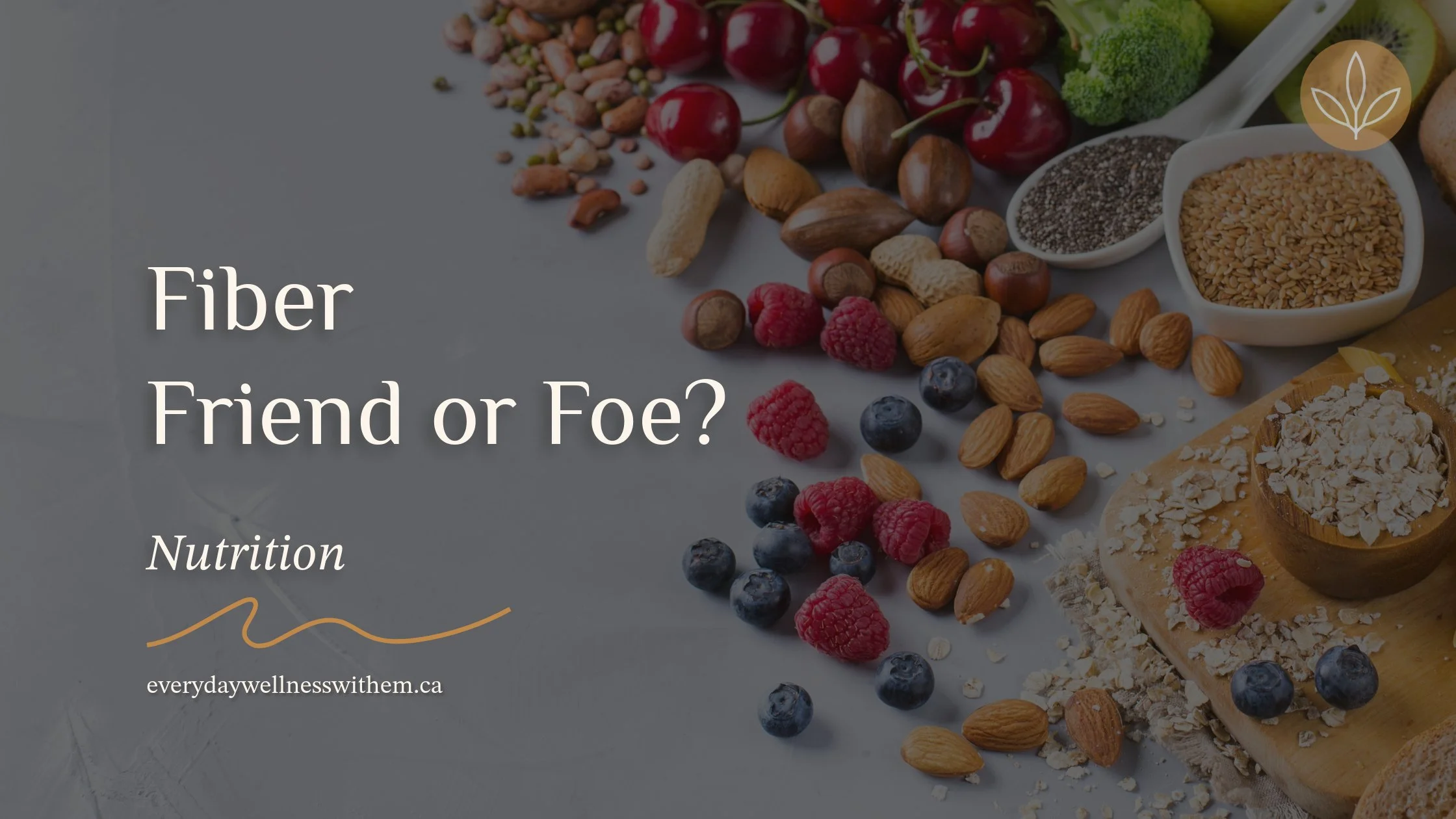Fiber: Friend or Foe?
What is Fiber? That Poop stuff right?
Fibre is a type of carbohydrate that the body cannot digest. Unlike other carbohydrates that are broken down into sugar molecules, fibre passes through the digestive system relatively intact.
It can be classified into two main types: soluble and insoluble.
Soluble Fibre
Soluble fibre dissolves in water, forming a gel-like substance.
It helps stabilize blood sugar and may decrease bad cholesterol levels.
Foods rich in soluble fibre include oats, beans, lentils, fruits (such as apples and citrus), and psyllium.
Insoluble Fibre
Insoluble fibre does not dissolve in water and adds bulk to the stool, aiding in digestion.
It helps prevent constipation by promoting regular bowel movements.
Foods high in insoluble fibre include whole grains, nuts, seeds, and the skins of fruits and vegetables.
So the real question:
Is fibre good or bad for you?
Fibre is an essential component of a balanced diet and is widely regarded as beneficial for your health. It plays a crucial role in maintaining digestive health, regulating blood sugar levels, and supporting heart health.
Benefits
Digestive Health: Fibre aids in preventing constipation by promoting regular bowel movements and supporting the growth of beneficial gut bacteria.
Heart Health: Consuming adequate fibre may help reduce cholesterol levels, which in turn lowers the risk of heart disease.
Blood Sugar Control: Fibre, particularly soluble fibre, can slow the absorption of sugar, helping to improve blood sugar levels, which is important for individuals with diabetes, blood sugar instability, or wanting to reduce inflammation in the body.
Weight Management: High-fibre foods tend to be more filling, which can help with weight control by reducing overall calorie intake.
Potential Downsides
While fibre is beneficial, introducing it into your diet too quickly can lead to digestive discomfort, such as bloating and gas. It’s important to increase your fibre intake gradually and ensure you're drinking plenty of water to help manage these effects. Additionally, some people may have specific dietary intolerances that make certain fibres less tolerable.
Overall, fibre is good for you and offers numerous health benefits. Incorporating a variety of fibre-rich foods into your diet can support your overall wellness. As with any dietary component, moderation is key, and it’s always best to listen to your body’s needs.
Did you know:
Health Canada recommends that adults consume about 25 grams of fibre per day for women and 38 grams for men. However, most Canadians only consume about half of this recommended amount.
Okay, so you’ve decided you want to eat more fiber.
Now, where do you find it?
Read Nutrition Labels: Look for the fibre content in the nutrition facts panel on packaged foods. Aim for items that contain at least 3 grams of fibre per serving for a good source.
Choose Whole Grains: Opt for whole grain breads, pastas, and cereals instead of their refined counterparts. Whole grains retain more of their natural fibre.
Incorporate Fruits and Vegetables: Fresh, frozen, or dried fruits and vegetables are excellent sources of fibre. Some top choices include apples (with skin), pears, berries, carrots, and broccoli.
Select Legumes: Beans, lentils, and peas are incredibly high in fibre and can easily be added to soups, salads, and stews.
Snack Smart: Instead of processed snacks, choose whole food options such as nuts, seeds, and popcorn. These can provide a satisfying crunch while boosting your fibre intake.
Explore Seeds and Nuts: Chia seeds, flaxseeds, and almonds are fibre-rich additions to meals or can be enjoyed as snacks.
Try Avocado: This creamy fruit not only packs healthy fats but also provides a substantial amount of fibre, making it a versatile choice for various dishes.
Incorporate High-Fibre Grains: Besides whole grains, look for fibre-rich grains like quinoa, barley, and farro to diversify your meals.
Check out Plant-Based Options: Emphasize plant-based proteins such as tempeh or edamame, which are not only nutritious but also deliver a good dose of fibre.
Looking to increase your fiber intake with custom-personalized recommendations?
Fill in the form below to book a free 15-minute Nutrition and Lifestyle Consultation with me!




